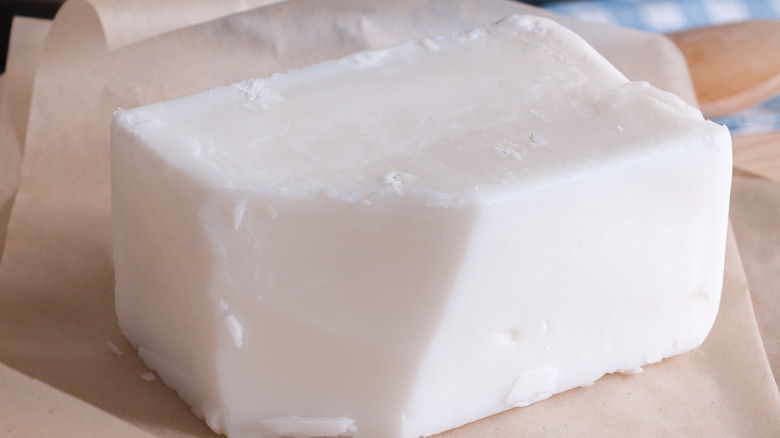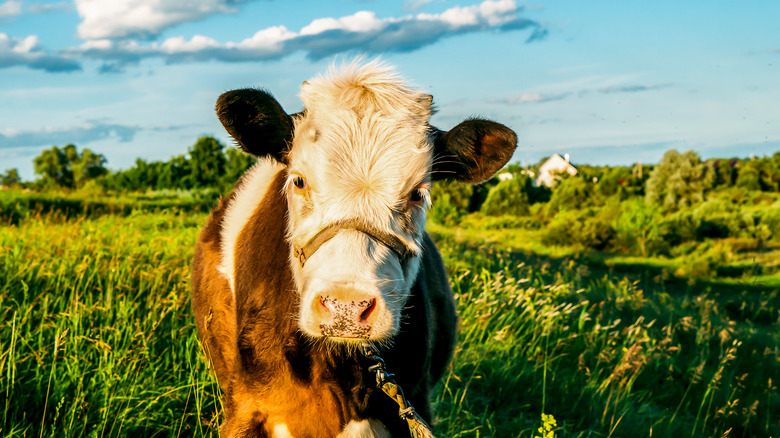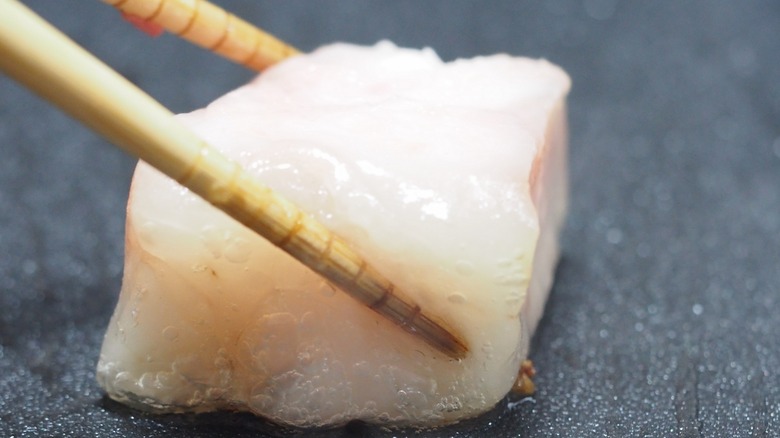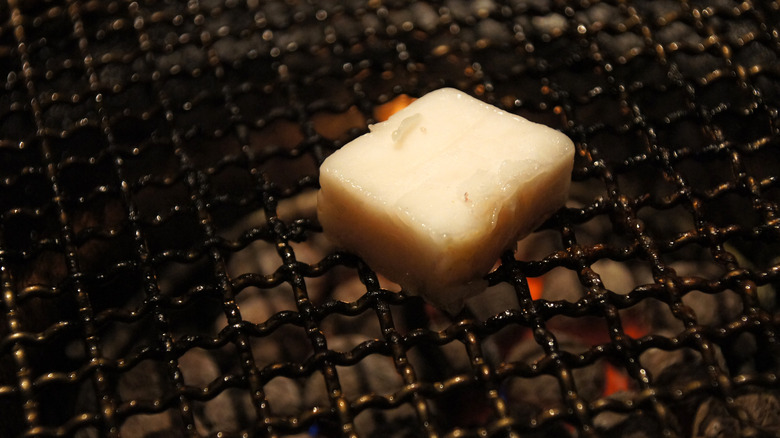What Is Tallow And Is It Nutritious?
Tallow is by no means a very common ingredient. It has been around for a very, very long time, but you may have never even knowingly purchased it from a store, and you've certainly never consciously ordered it at a restaurant. Nevertheless, you might not have realized that you've consumed it on many occasions. In recent years, it's exploded in popularity, so if you're writing tallow on your shopping list but you're not entirely sure what it is, where it comes from, what it's made of, or why Nigella Lawson thinks it's underrated, then look no further.
At its essence, tallow is more than rendered animal fat, primarily from beef; rendered fat from lamb, pork, or chicken goes by different names. Along with items like bone broth, tallow has had a reinvigorated presence in today's food and nutrition world. The Spruce Eats notes that beef tallow, of course, comes from cows. It was once used to cook Native American dishes such as pemmican.
In order to make tallow, the fat is cut off of the meat and melted, before being packaged or stored, hardening as it sits (although it can re-melt in an especially warm climate). It can be used as a cooking fat, like oil or butter, and it also has a very high smoke point, so it's great for high-heat cooking, frying, and more. Tallow also lends itself well to flaky, rich baked goods. Furthermore, tallow has many uses that go far beyond cooking.
How else is tallow used?
According to The Spruce Eats, beef tallow was used as a curative, in candles, as fuel, and more. It's an ingredient that fits squarely in the "nose to tail ethos," for those intent on using every bit of the animal. Beef tallow has a fatty, mild flavor. It is shelf-stable and similar to lard. It's also very in line with paleo and keto cooking, which is another reason why it's had such a resurgence in popularity in recent years.
Nutrition Advance notes that tallow is the color of coconut oil, but shaped like butter. It is a pure source of fat without carbs or protein. It's super affordable, very sustainable because it comes from an almost incessantly renewable resource, and it's hyper-resistant to oxidation. It is shelf-stable and can stay at room temp. It also has an extremely high smoke point, which makes it an excellent choice for an type of high-heat cooking. You can also render beef tallow yourself at home instead of purchasing it. (A foolproof step-by-step method is posted at Hey Grill Hey.) If you'd rather opt for store-bought, the paleo and keto crazes have made tallow readily available at many mainstream supermarkets.
The history of tallow
Tallow has been around for a very long time. As just one example of its historical roots, The Tallow Chandlers Company was formed in 1300 to "regulate oils, ointments, lubricants, an fat-based preservations and to manage candle making using tallow."
Often in the U.K. or Ireland, tallow can also go by a rather unappetizing game: beef dripping. Atlas Obscura references a "classic wartime dish" that consisted of nothing but bread, "dripping," and salt and pepper. This was primarily consumed by the British during the rationing of food in the days of World War II. Unfortunately, tallow fell out of fashion as the ease of vegetable oil production rose, but as we now know, vegetable oil can be very problematic, whereas tallow is a source of pure fat, which boasts many more nutritional benefits than the vegetable oils. No matter the name, rendered beef fat is clearly a super valuable ingredient.
Is tallow good for you?
Tallow is an absolute wonder from a nutritional perspective. It contains vitamins D and E, and Butcher Magazine notes that it contains trace amounts of choline and selenium. It also contains conjugated linoleic acid, which is aid to be very beneficial from a nutritional perspective. Pittsburgher Highland Farm notes that is can also be used as a skin moisturizer, as well as a lubricant for leather and wood. Babs Bone Broth notes that it has anti-inflammatory properties, helps protect the body from infections, burns fat, softens skin, and is an ideal cooking fat, preferred over any sort of processed oil or butter. Doctor Kilz notes that it improves heart health, reduces risk of diabetes and cardiovascular disease, helps balance cholesterol, activate the metabolism, and increase the absorption of vitamins. It's even said to make a terrific soap.
On the other hand, the saturated fat content is high, but as long as you're not eating tallow by the bucket-full and instead using it as a cooking fat or as an inclusion in baked goods, then you should be all set.



